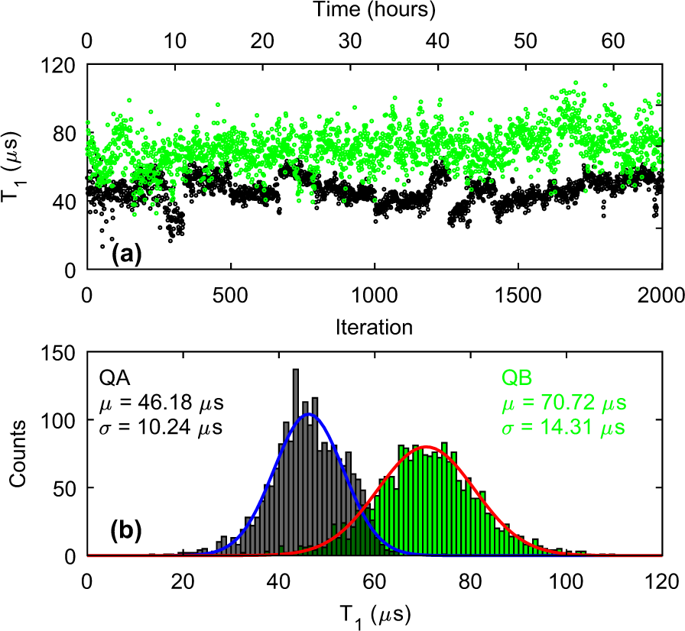npj Quantum Information ( IF 6.6 ) Pub Date : 2019-06-26 , DOI: 10.1038/s41534-019-0168-5 Jonathan J. Burnett , Andreas Bengtsson , Marco Scigliuzzo , David Niepce , Marina Kudra , Per Delsing , Jonas Bylander

|
We benchmark the decoherence of superconducting transmon qubits to examine the temporal stability of energy relaxation, dephasing, and qubit transition frequency. By collecting statistics during measurements spanning multiple days, we find the mean parameters \(\overline {T_1}\) = 49 μs and \(\overline {T_2^ \ast }\) = 95 μs; however, both of these quantities fluctuate, explaining the need for frequent re-calibration in qubit setups. Our main finding is that fluctuations in qubit relaxation are local to the qubit and are caused by instabilities of near-resonant two-level-systems (TLS). Through statistical analysis, we determine sub-millihertz switching rates of these TLS and observe the coherent coupling between an individual TLS and a transmon qubit. Finally, we find evidence that the qubit’s frequency stability produces a 0.8 ms limit on the pure dephasing which we also observe. These findings raise the need for performing qubit metrology to examine the reproducibility of qubit parameters, where these fluctuations could affect qubit gate fidelity.
中文翻译:

超导量子位的退相干基准
我们对超导跨比特量子比特的去相干性进行基准测试,以检查能量弛豫,移相和量子比特跃迁频率的时间稳定性。通过收集跨越多天的测量过程中的统计数据,我们发现平均参数\(\ overline {T_1} \) = 49μs和\(\ overline {T_2 ^ \ ast} \) = 95μs;然而,这两个量都在波动,这解释了在量子比特设置中需要频繁重新校准的必要性。我们的主要发现是,量子位弛豫的波动是量子位的局部波动,是由近共振两级系统(TLS)的不稳定性引起的。通过统计分析,我们确定这些TLS的亚兆赫兹开关速率,并观察单个TLS与跨序列量子位之间的相干耦合。最后,我们发现有证据表明,量子比特的频率稳定性对纯移相产生了0.8 ms的限制,我们也观察到了这一点。这些发现增加了执行量子位计量来检查量子位参数可重复性的需求,这些波动可能会影响量子位门的保真度。











































 京公网安备 11010802027423号
京公网安备 11010802027423号